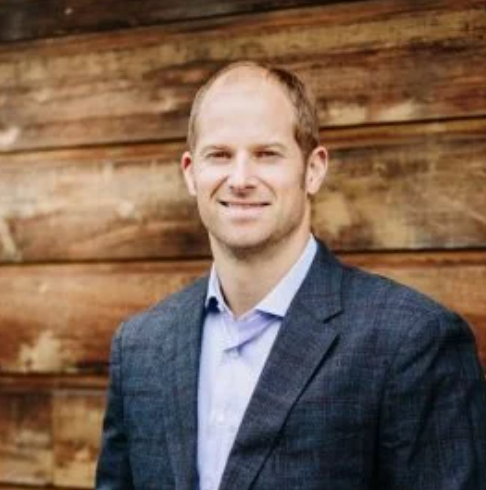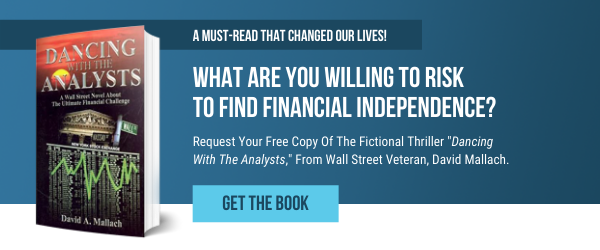Successful long-term investors get a couple of things right. One of the things they get right is that they take their dividends to Starbucks, meaning they don’t buy their next latte out of their account balances. They don’t spend their seed money; they spend the growth of their initial investment.
Even though this may seem obvious, every single day at Beck Bode we talk to ordinary, hard-working people who struggle with this idea in action. In retirement, for example, you want to make sure that your original investment provides enough growth to fund your lifestyle – not just today but also in the future. But talk to most folks and you’ll notice that their energy is focused entirely on the ups and downs of the stock market, at what’s being flashed on the screen at every turn. They have been trained – by the financial industry and by the media - to focus on the market value of stocks. When you focus just on price, it just makes it harder to stay the course.
What is a Dividend?
Now let’s take a moment and talk about a frequently overlooked feature of stocks: the dividend. A dividend, as you may know, is the distribution of a company’s earnings to its shareholders, essentially a ‘reward’ for holding its equities. Not all companies pay dividends, but some do. A dividend is one of the most beautiful things (in financial terms) a company can do, which is to give you a return on your investment, over and above price appreciation. Very few people are paying attention to what a company is paying for a dividend. That’s because most people confuse the stock price with an indication of the value of the company. (And yes, while you could argue that price does indicate something about the value of the company, it doesn’t tell the entire story.)
Shifting the Focus of Your Investment Strategy From Price to Dividend
What drives the value of a company? Well, many things, but primarily it’s innovation, and the hard work and sweat of the people in the organization. Those efforts increase revenue and certainly are reflected in the price of the company. Unfortunately, for most investors, that’s where the story ends. All the media talks about is price, and so investors know to focus their attention on price, which as you know tends to go up and down quite a bit. In particularly volatile times, the ups and downs of a stock’s price can completely distract us from everything else that may be going on in a company.
How can you make money in the stock market if your entire focus is on price? Well, you can, assuming you can see into the future, and you can accurately foresee when to sell. Some people call this a strategy, though we know that it’s really market timing. And since we also know that the future is unknown and unknowable, we also believe that this is not a reliable way to invest. What if you buy a stock today and it goes up a hundred points, and you sell it? Ok, fine, that does happen. But what if it doesn’t go up, then what? Or what if you sell and the price continues to climb?
Imagine what might happen if you shifted your focus from price to something else- say, the dividend. What if you gave a lot more attention to what is, in my opinion, the most important aspect of investing, namely getting your money back. The dividend is the portion of the earnings of the company paid back to you every quarter. In my opinion, the most important aspect of investing is to get your money back (and more).
Dividends vs Account Balance: Recognizing Potential
At Beck Bode, this is the foundation of our investing philosophy, and it’s one of the criteria we strongly rely on in our Income Growth Strategy. In all our portfolios, we focus on good companies that are getting even better. And as they get better, they make more money. And as they make more money, if they are dividend-paying companies, they pay more back to their shareholders. We advise our clients to use that real money to fund their lifestyle. When you are focusing on living off the dividends of your investments, you will also be less susceptible to the emotional rollercoaster that is an inevitable part of price volatility. When you start looking at dividends, you will notice that they are consistent indicators of a company’s growth, particularly over long periods of time.
When you look at your account statements, your account balance represents the prices of the holdings in your portfolio. The account balance represents the value of the companies in your portfolio at this moment in time; it reflects all known information. The dividend, on the other hand, is the way the company ‘signals’ to its shareholders how things are going for the company. It’s a message from the company as to whether things are getting better (or not.) The price of a company doesn’t contain any potential, but the dividend does. The dividend represents opportunity. A rising dividend (especially a consistently rising dividend over time) is a subtle yet powerful indicator. It literally pays to pay attention to it!
Tune out the Media When Identifying Investing Opportunities
The other day, the equipment manufacturer Caterpillar reported earnings that did not meet certain estimates. Consequently, their stock was down X percent. But Caterpillar is a company that over a long period of time has raised its dividend consistently. While we don’t know what the future looks like for Caterpillar, we want to pay particular attention to what they are going to report for dividends, and not base our decision-making on their price.
Turn on any financial cable program, and you’ll hear all day long talk about what company is up, and what’s down. Apple is up! Microsoft is down! Facebook just bought back some stock! Then Apple is down, Microsoft is up, and so on and so forth. What does any of this noise tell you about the opportunity that these companies present? If you’re making your decisions based on stock price, all this talk tells you absolutely nothing.
Beck Bode’s Growth Strategy: The Power of Using Meticulously Curated Research
Here at Beck Bode, we pore over a massive amount of meticulously curated research and pay close attention to earnings estimates and dividends. Whether our clients invest in our Growth Strategy, our Income Strategy, or any of the other variations of these strategies, we employ earnings estimates, dividends, or both, to tune out the noise of the marketplace, and to really listen to what’s going on inside of the universe of available companies.
You may have heard me say in the past that whether we are looking at earnings estimates, revisions, or dividends as metrics for our decision-making, our job is to ‘read between the lines a little’ – by which I mean to pay close attention to the story that the numbers are telling us. It is a process that is entirely analytic, but requires us to look at metrics that are quite subtle, yet tremendously vital to the health of a company.
Now, nothing comes without risk, and so it is with dividends, as it is with earnings estimates. The rising dividend tells us that the company is getting better, that the company itself believes that it has a brighter future ahead. But the future is not known to anyone, not to us, not to the company, and not to the analysts. So there is risk in using information that indicates what may happen in the future, but without risk there also cannot be commensurate return.
We acknowledge the risk – every investor must acknowledge the risk – but by using the best information we can get our hands on compiled by some of the smartest, best-trained analysts in the world, we use these metrics to assess the unique opportunities that dividend-paying companies provide, as a way to select them for inclusion in our Income Growth strategies.
Paying Close Attention to the Dividend Will Help Your Retirement Planning
Consider what you have heard today about the dividend, against the backdrop of your retirement. How will you pay for your lifestyle over the course of your (potentially) 30- or 40-year retirement? How are you going to be able to continually invest in ‘the right thing’ if your focus is on the ever-so-frequent ups and downs of the markets? You better start paying attention to the dividend.
If there is a lesson in this, it’s that the subtle signs are vital, and that - as in life itself- it’s easy to miss the important things when we are distracted by what’s loud or shiny. Beauty takes on so many forms. In our investing methodology, we consider the dividend a thing of beauty, right under the surface, ready to provide us with information that will make all the difference in a lifetime of investing.
Learn more about Beck Bode's investment strategy
Ben Beck is Managing Partner & Chief Investment Officer at Beck Bode, a deliberately different wealth management firm with a unique view on investing, business and life.
 Benjamin Beck, CFP®
Benjamin Beck, CFP®